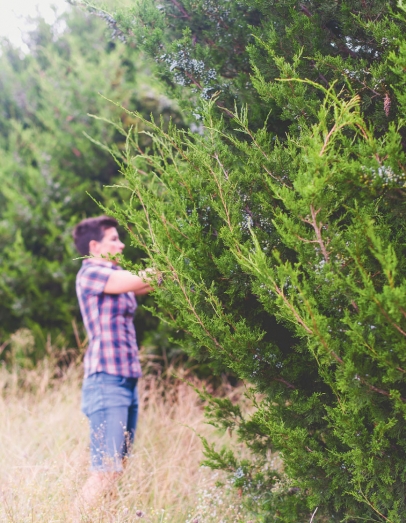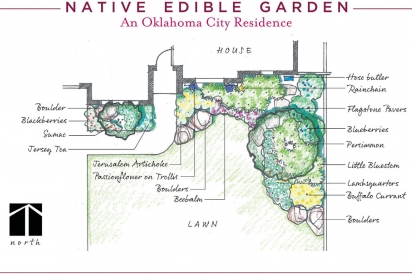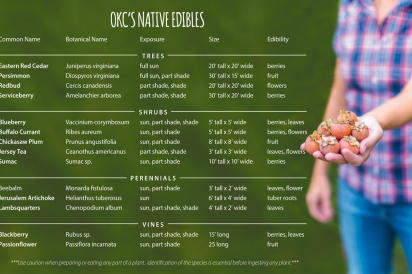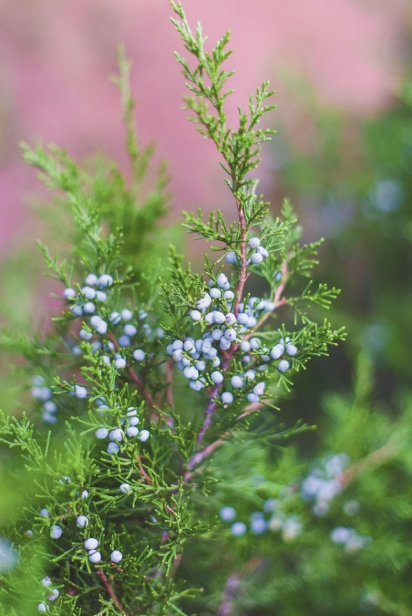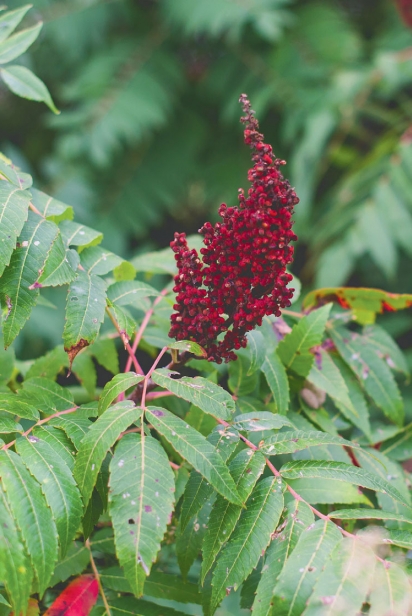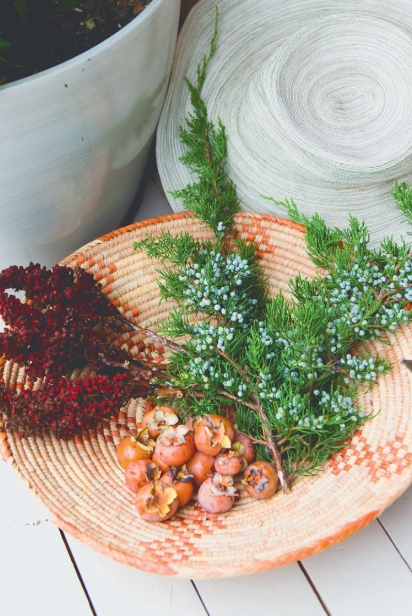Branch to Mouth - Growing Native Edibles in Your Home Garden
Growing Native Edibles in Your Home Garden
In the span of human literature, from the Garden of Eden in the Book of Genesis to The Secret Garden by Frances Hodgson Burnett, gardens have historically been described as beautiful, vegetative places where we heal, ground, cultivate, nurture, and feed the human mind, body, and spirit.
In modern times, the traditional garden more closely resembles a yard with rows of cultivated vegetable crops like tomatoes, okra, and squash, or it is composed of tidy ornamental plants that neatly and minimally align a home’s exterior walls. While both versions of the traditional home garden serve their purposes, neither effectively feeds the human mind-body-spirit while simultaneously benefitting the local ecosystem and its associated wildlife.
Douglas Tallamy, author of Bringing Nature Home and Professor of Entomology at the University of Delaware, posits that “A plant that has fed nothing has not done its job.” This timely maxim accentuates the importance of selecting plants for the home garden that are not only edible or attractive, but also capable of performing a critical ecological role. Another way to phrase this is, “A plant that feeds many has fulfilled its role.”
Fortunately, in Oklahoma City we are blessed with a profusion of native plants that fulfill their roles as primary food and nectar sources for an abundance of birds, bees, butterflies, and beetles, even small and large mammals. In other words, our local prairie and woodland vegetation is quite literally a grocery store for local wildlife.
But did you know that many of our city’s native plants are a nutritious and delicious source of nourishment and sustenance for humans too? And when you plant them in your home garden, foraging for food is as simple as walking out your back door.
For example, in addition to being a food source for birds, Oklahoma City’s native Sumac plant is a great source of Vitamin C, and it can be steeped to make a warm citrus-y tea or cool refreshing lemonade. Our native Eastern Redcedar berries, also beloved by Cedar Waxwings, are tasty as a savory seasoning for cooked lamb, and they also contain the cancer-fighting compound podophyllotoxin. And if you’re craving something sweet, you’ll have to compete with deer for the juicy, orange fruits that drop from our native Persimmon tree – so delightful right off the branch.
These native edible plants and others (see the "OKC's Native Edibles" list on the next page) also exhibit innate characteristics that out-perform cultivated vegetable crops and non-native ornamental plants on several fronts, making them great options for even the most novice gardener.
Foremost, our native edible plants are weather-resilient, having evolved over centuries to not only survive our region’s harsh weather conditions and extremes, but to thrive in them.
Second, they are habitat-generative, meaning that they boost the biodiversity in the location where they are planted. In addition to feeding humans, these plants serve as nectaries and nesting habitat for a host of invertebrates, pollinators, and birds. These invertebrates are food sources for birds and small mammals, which then become prey for larger mammals, sustaining life on multiple levels.
Native edible plants are resource-reductive in terms of ongoing upkeep and maintenance. A 2004 study by the city of Santa Monica found that home gardens that incorporate exclusively native plants translate into a cost savings of $2200 per year, because they use 77% less water, create 66% less waste, and require 68% less labor than traditional gardens composed of non-native plants and vast lawn areas.
Last but not least, gardens that include native edible plants are soul-inspiring. Growing a native plant garden that feeds your body and supports wildlife is a life-affirming opportunity to reconnect with nature and open your heart to receive the infinite health and wellness benefits derived from a relationship with the natural world. Learning to observe nature and providing for non-human life forms engenders humility, an innate sense of stewardship, and even self-love.
Growing native edibles in the home garden is also easy. Whether you plan to fill a large planter on your third floor balcony in Midtown or convert your entire Nichols Hills yard to a native plant community, these 5 stress-free steps will help you get started:
1. Pick a location for your native edible garden, and calculate the square footage. Is it a large planter with 4 sq.ft. of planting area? Is it a 100 sq.ft. bare space in your existing planting bed? Grab a tape measure and a calculator, and do some math.
2. Determine the sun exposure of your selected location. If your location is on the south-facing or west-facing side of your home, it may receive full sun all day. If your selected location for your native edible garden is on the north-facing side of your home, more than likely it receives shade all day.
3. Select some plants from the “OKC’s Native Edibles” list on this page. Choose the right plant for the right place in terms of sun exposure and size of the area. For example, if your selected location for your native edible garden receives full sun all day, choose Sumac, not Serviceberry. If you only have a 6 sq.ft. area in partial shade, choose a few Beebalm plants, not Chokecherry.
4. Purchase your plants. The region surrounding Oklahoma City boasts a handful of wonderful plant nurseries that grow and sell natives like Prairie Wind Nursery, Wild Things Nursery, and TLC Garden Center.
5. Install your plants. Dig a hole three times larger than the plant’s container, and set the plant within it, making sure the plant’s stem base is level with the surrounding existing soil. Add mulch and water thoroughly.
When you grow native edibles in your home garden, you’ll feed yourself, your family, and your community. You’ll allow your yard to fulfill its important ecological role within the fabric of Oklahoma City’s overall ecosystem. You’ll deepen your connection with nature’s rhythms, perhaps glimpsing for the first time that, as Burnett writes, “If you look the right way, you can see that the whole world is a garden.”


